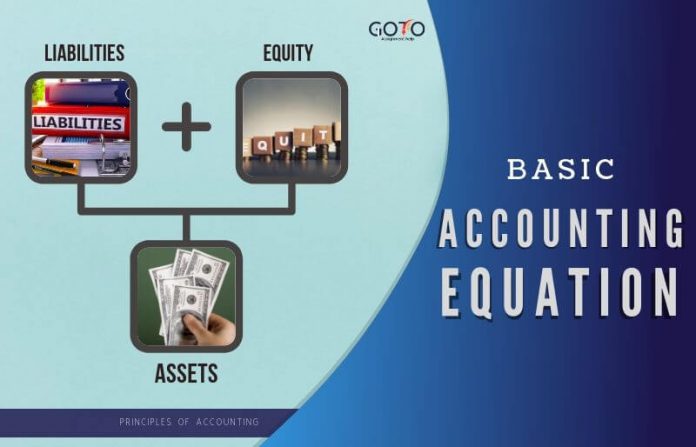
Real estate, though, is less liquid — selling land or buildings for cash is time-consuming and can be difficult, depending on the market. This long-form equation is called the expanded accounting equation. On the other hand, equity refers to shareholder’s or owner’s equity, which is how much the shareholder or owner has staked into the company. Small business owners typically have a 100% stake in their company, while growing businesses may have an investor and share 20%. Plus, errors are more likely to occur and be missed with single-entry accounting, whereas double-entry accounting provides checks and balances that catch clerical errors and fraud. It can be defined as the total number of dollars that a company would have left if it liquidated all of its assets and paid off all of its liabilities.
Arrangement #1: Equity = Assets – Liabilities
In worst-case scenarios, the company could go bankrupt as a result of mishandling finances using inaccurate numbers due to an unbalanced equation. So, let’s take a look at every element of the accounting equation. This transaction brings cash into the business and also creates a new liability called bank loan.
What is the difference between an asset and a liability?
However, due to the fact that accounting is kept on a historical basis, the equity is typically not the net worth of the organization. Often, a company may depreciate capital assets in 5–7 years, meaning that the assets will show on the books as less than their “real” value, or what they would be worth on the secondary market. These are some simple examples, but even the most complicated transactions can be recorded in a similar way. This equation is behind debits, credits, and journal entries.
How confident are you in your long term financial plan?
Speakers, Inc. purchases a $500,000 building by paying $100,000 in cash and taking out a $400,000 mortgage. This business transaction decreases assets by the $100,000 of cash disbursed, increases assets by the new $500,000 building, and increases liabilities by the new $400,000 mortgage. Ted is an entrepreneur who wants to start a company selling speakers for car stereo systems. After saving up money for a year, Ted decides it is time to officially start his business.
What Is a Liability in the Accounting Equation?

That part of the accounting system which contains the balance sheet and income statement accounts used for recording transactions. In our examples below, we show how a given transaction affects the accounting equation. We also show how the same transaction affects specific accounts by providing the journal entry that is used to record the transaction in the company’s general ledger. To further illustrate the analysis of transactions and their effects on the basic accounting equation, we will analyze the activities of Metro Courier, Inc., a fictitious corporation.
Assets
- As you can see, assets equal the sum of liabilities and owner’s equity.
- Metro Courier, Inc., was organized as a corporation on January 1, the company issued shares (10,000 shares at $3 each) of common stock for $30,000 cash to Ron Chaney, his wife, and their son.
- Obligations owed to other companies and people are considered liabilities and can be categorized as current and long-term liabilities.
- Under the accrual basis of accounting, expenses are matched with revenues on the income statement when the expenses expire or title has transferred to the buyer, rather than at the time when expenses are paid.
- This can lead to inaccurate reporting of financial statements and incorrect decisions made by management regarding money and investment opportunities.
Now that we have a basic understanding of the equation, let’s take a look at each accounting equation component starting with the assets. The accounting equation is a concise expression of the complex, expanded, and multi-item display of a balance sheet. Equity refers to the owner’s interest in the business or their claims on assets after all liabilities are subtracted.
It is the value of the assets that people outside the business can lay claim to. So, if you really understand this equation, the rest of accounting becomes that much easier. It’s the fundamental equation that underpins how do you calculate the gain or loss when an asset is sold all of accounting. For information pertaining to the registration status of 11 Financial, please contact the state securities regulators for those states in which 11 Financial maintains a registration filing.
Equity includes any money that has been invested into the company by shareholders as well as retained earnings which have not yet been paid to shareholders as dividends. On 2 January, Mr. Sam purchases a building for $50,000 for use in the business. The impact of this transaction is a decrease in an asset (i.e., cash) and an addition of another asset (i.e., building).
The accounting method under which revenues are recognized on the income statement when they are earned (rather than when the cash is received). A company’s quarterly and annual reports are basically derived directly from the accounting equations used in bookkeeping practices. These equations, entered in a business’s general ledger, will provide the material that eventually makes up the foundation of a business’s financial statements. This includes expense reports, cash flow and salary and company investments. As expected, the sum of liabilities and equity is equal to $9350, matching the total value of assets.
